Aqualounge is the Coolest Streaming Channel You Aren’t Watching
The person, and the concepts, behind the streaming destination Aqualounge

In the dying days of the 3DS, I picked up a strange little game called Automaton Lung. It was a 3D platformer set in a mysterious, apocalyptic world, using low-poly graphics and the system's 3D display capabilities to produce an eerie, haunting ambiance. It hooked my imagination immediately; I wanted to know more. Where did this game come from? Who made it, and why?
Then I stumbled across a short documentary about the game from a streaming channel I hadn't heard of before: Aqualounge. A soothing voice discussed the game in poetic terms over footage of oceans and animated EQ bars. The completeness of the video's aesthetic presentation, and the way it neatly dovetailed into the game's thematic depiction of a space both organic and artificial, amazed me. I dove into the rest of the channel's videos immediately and discovered games I'd never heard of before, all united under a similar creative vision.
When I found out that the mastermind behind Aqualounge was Max Krieger, the developer of the glorious 2019 indie puzzler Crossniq+, I knew I had to talk to him. We caught up to chat about his vision for Aqualounge, the inspiration behind the channel's eye-catching aesthetic, and the community-based solutions for the problems plaguing the industry today.
SUPERJUMP: Alright! So my first question for you is: can you define the Aqualounge concept?
Krieger: The Aqualounge concept comes back to this idea I have that, whether the industry knows it or not, video games are a lifestyle product. That means that around video games, spaces and communities tend to form, because not only are they media, but they are something that you partake in together as active play. And so, video game culture tends to really be scene-based. The idea of Aqualounge was kind of born out of frustration that the power holders in the video game industry don’t really understand that these sorts of things organically form around games.
So the way I can best describe Aqualounge is that it’s a scene-driven platform centered around games with a compelling aesthetic. And what is that aesthetic? That’s the vibe. That’s the X-factor about Aqualounge that’s very hard to quantify. So far I’m the only curator for the games that end up on stream – I rely on other people to help bring suggestions, of course – but ultimately I have to identify the commonalities, the aesthetic, and the vibe through-line between everything that I run.
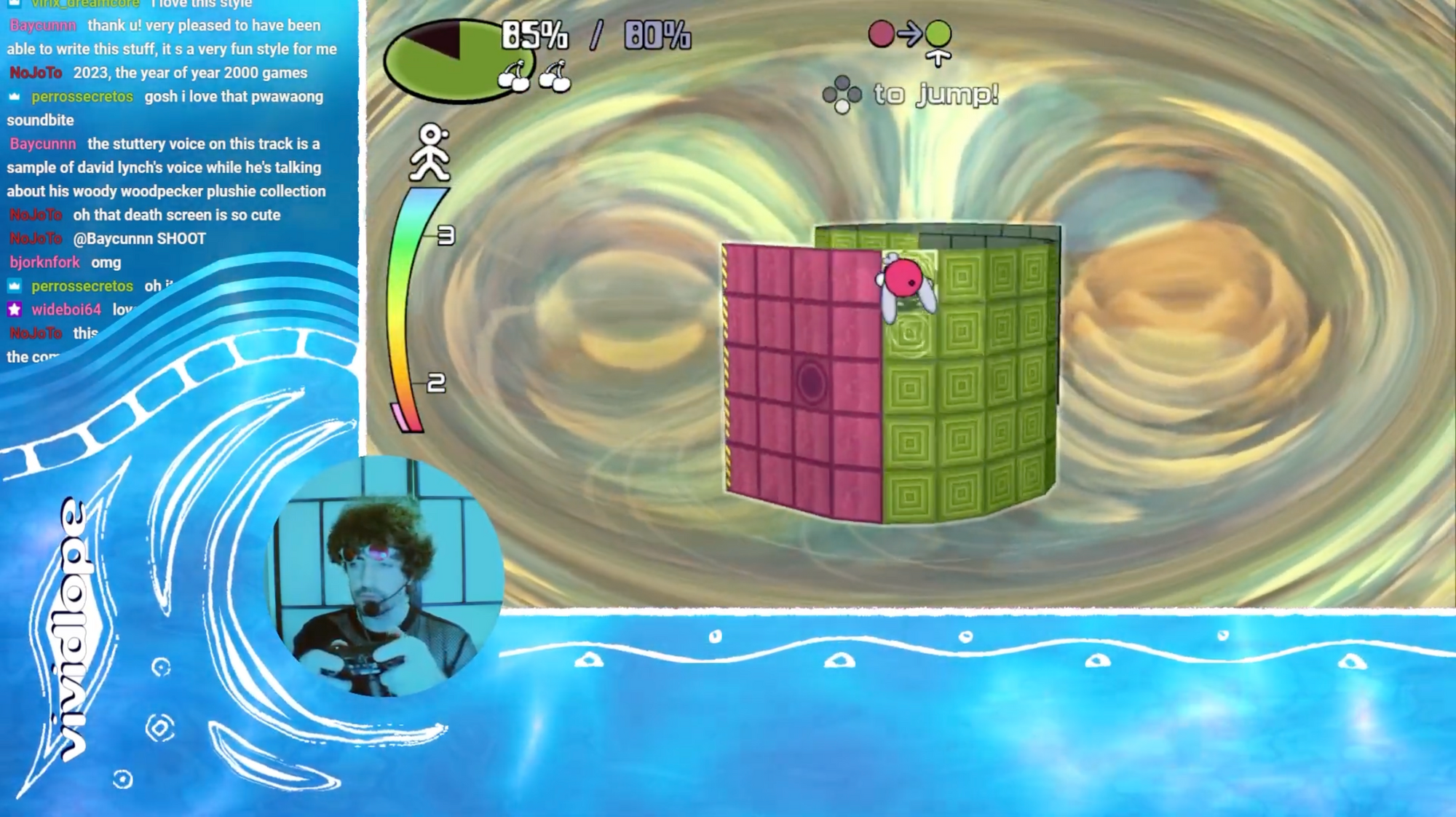
It’s easy to quantify it as a platform in which I try to include everything from a stream, a Discord, merchandise, [and] things like the Deep Dive series on Youtube where I’m actually trying to do a little bit of documentary work. I see that as all one cohesive thing. But the X-factor is the vibe or the aesthetic. And that’s hard to quantify.
I feel like I answered and didn’t answer your question, so apologies. [laughs]
SUPERJUMP: No, that’s actually an interesting answer. I was wondering hearing that, when did you start thinking of video games in this way, as a broader lifestyle thing, and more contextual?
Krieger: I’ve thought about them that way for a really long time. I think my first experience with that was seeing the rhythm game community in the northeastern US. I grew up in Cleveland, Ohio – not exactly a hotbed for arcades. The closest DDR machine to me was at an arcade half an hour south, and it was frequently in disrepair, but that’s where people went to play it. And so [seeing] arcades in general, particularly the Bemani and rhythm game scene, I became enamored of the concept of people spending time in a space together. A concept of space, of play, of music – I forgot to mention that music and musical curation is super important to Aqualounge, that’s kind of an aesthetic through-line as well.
It was a thing that you did together with people, and then you carried it with you when you went home, because the music was something that people would put on their MP3 players at the time, or they burned CDs. That was the lifestyle element – it was there when you played it and it was there when you weren’t playing it. It was something that defined part of who you are.
"I never quite belonged to one of [those scenes], and that ended up with me saying, 'Well, I should try making my own.' That's kind of what Aqualounge turned into."
And I realized as time went on, if you look at how fighting games work, if you look at how shooters work, if you look at the early RPG community on webrings and forums, people were bonding not just in their love of what they were playing, but it influenced how they lived their lives. So I noticed that continued to be a recurring pattern as I spent a lot of time in or around these spaces. I never quite belonged to one of [those scenes], and that ended up with me saying, "Well, I should try making my own." That’s kind of what Aqualounge turned into.
I’ve had the concept for something like Aqualounge for about 7 or 8 years, but that’s kind of where it started. It’s just something that I noticed spending time and being observant. I think it’s how people organically interact around games.
SUPERJUMP: That’s really cool! Did you always envision Aqualounge as a streaming, or streaming-adjacent kind of project, even when you started conceptualizing it all those years ago?
Krieger: The idea [was] something that people could tune into, that they could engage with passively or actively. I feel like one of the big barriers that a lot of people experience with video games-as-scene is that, since they're interactive, it’s not as passive as, say, watching a film or going to a concert. It demands engagement, it demands reaction time, performance – particularly in front of others – that's a big barrier for a lot of people. But people still want to participate in the scene around games, even if playing them in front of other people isn’t necessarily what they want to do at the time.
So passive engagement through something like video was something that was core to the concept from the very beginning. Music was core to the concept from the very beginning. And showcasing other independent things like music, animation – I run animation on Aqualounge between games – or music videos. [It's] obviously really heavily inspired by MTV Liquid Television. I mean, the joke is, where do you watch Liquid Television? In the Aqualounge! That’s where it comes from. I guess streaming video, not necessarily Twitch streaming, but streaming video was core to it, yes.
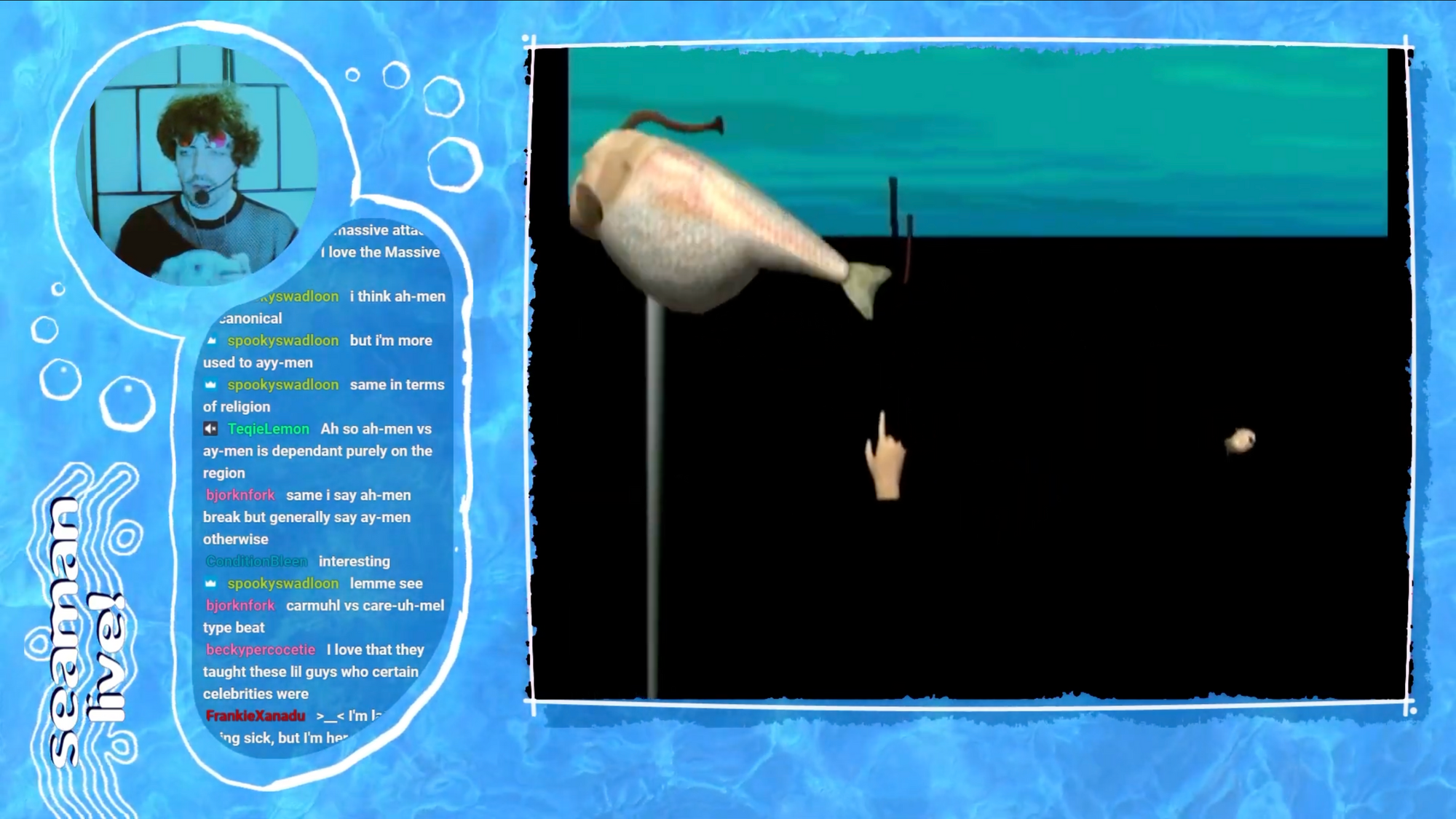
SUPERJUMP: How would you describe the Aqualounge aesthetic? I know you were saying earlier that it’s hard to pin down, but it does feel to me, as a viewer, that there is a really strong through-line there. Like, you mentioned Liquid Television, and watching it I always think of Toonami-…
Krieger: Yeah, that’s a big one.
SUPERJUMP: Yeah. So I was wondering, is it really based around that specific era of pop culture?
Krieger: It’s definitely inspired by it. I was a Toonami kid too, and then of course the Toonami team went on to launch Adult Swim, which was wildly successful. But they did similar things. You know, Adult Swim got involved in everything from record labels to live events to games – they had their own indie arm for a while. Adult Swim and Toonami are huge influences there.
But aesthetically, back during the development of Crossniq+, I was pretty involved with a circle called CARI, the Consumer Aesthetic Research Insitute. It’s essentially a webring that started on Facebook groups. It started with the Y2K Aesthetic Institute, which is their most successful venture. I was not a primary player in that circle, but I was pretty involved there [from] 2016 through 2019. And during that time, a lot of what we did was kind of guerilla taxonomy of consumer design. There’s some controversy over the validity of that – who gets to call what design certain things, what qualifies people to be able to do that. [But] back then we didn’t really care. We were just doing it because we were a bunch of people who were interested in it.
I was particularly active in the Y2K group there, there was one called Factory Pomo that was another popular one, there were some other ones I was involved in–…
SUPERJUMP: Like Gen-X Soft Club?
Krieger: Yep! I was involved in that as well.
SUPERJUMP: Yeah, I loved that!
Krieger: Yeah, I was actively curating a lot of that for a bit. The two big players [were] Froyo Tam and Evan Collins, who I’m still friends with.
When I was doing a lot of curation for Gen-X Soft Club and the Y2K stuff, if Y2K was here [holds up one hand] and Gen-X Soft Club was here [holds up other hand next to it], there was a third circle [in the middle], and I was trying to define what that third circle was. There were influences from the frosted glass and chill vibes of the Gen-X Soft Club – a little bit urbane, but also cool and slick – with the technology parts of Y2K, but there was also a little bit of surf iconography, and those blue shades that they used in everything, channeling water. I tentatively was going to launch a group called Aqualounge which was my attempt at classifying that aesthetic.
Then CARI moved off of Facebook and into Discord, and I don’t really thrive in Discord naturally – it takes a lot of my attention. So my involvement dropped off after that, but they’re still active, and they’re a pretty cool group. But I still had all that Aqualounge research stuff lying around, and I said, "I’ve had this idea for a video game-as-lifestyle platform, and I have this cool aesthetic research I’ve been doing. Why don’t I combine the two?" And that’s where the modern incarnation of Aqualounge came from.
SUPERJUMP: That’s cool! That makes so much sense, seeing that evolution from Y2K Aesthetic Institute and associated stuff.
Krieger: I have an old lookbook of images from that time, if you’d like me to send them to you.
SUPERJUMP: That would be great! Would it be okay if I included some of those in the piece?
Krieger: For sure!
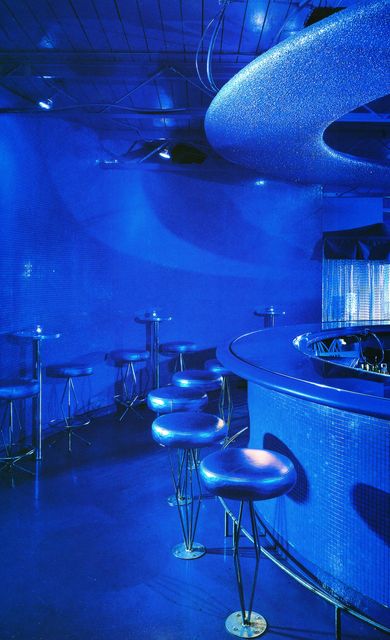
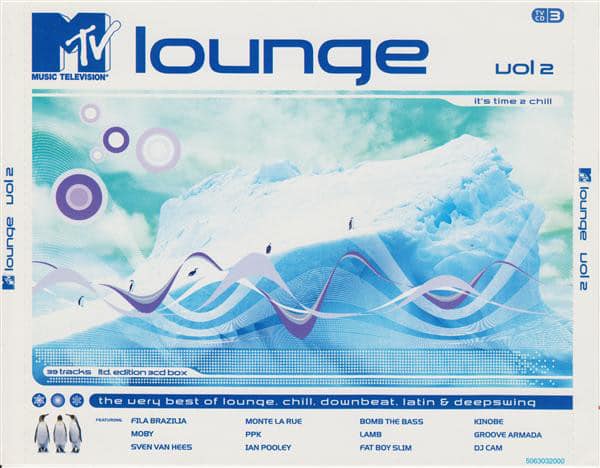
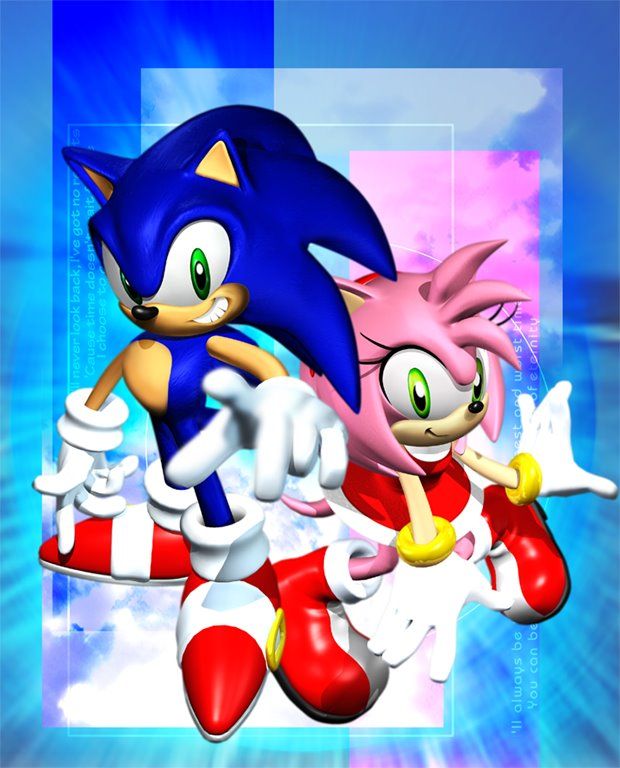
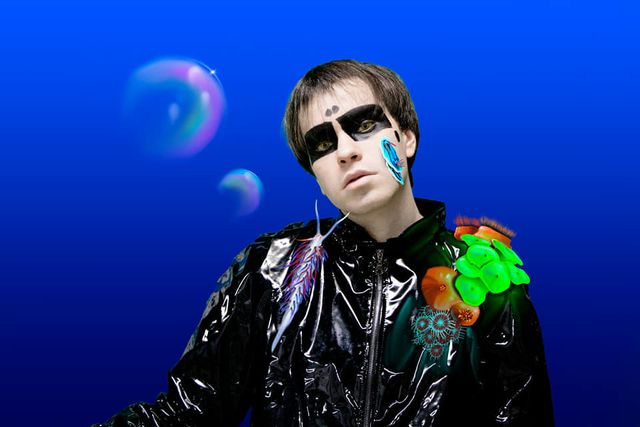
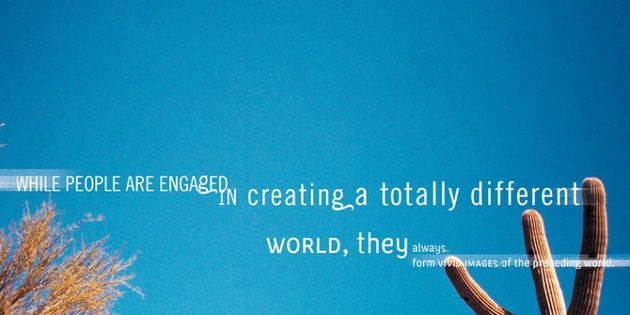
SUPERJUMP: It’s cool seeing that linkage, because I’ve been aware of Y2K Aesthetic Institute from Tumblr, for like, years before that aesthetic became more mainstream. So it’s cool to know that you were involved in that!
Do you make all of the Aqualounge graphics and visual stuff yourself as well?
Krieger: Yes. All the fliers that I make to promote the stream, I make myself. I synthesize graphics in Photoshop – I'm working in a copy of Photoshop that’s, like, ancient. I still have the DVD for it, I was given it when I was a kid and I refuse to pay Adobe any more money. [laughs]
So I’m still using my ancient copy of Photoshop CS3 to make all the graphics. I use a combination of stuff I synthesize in Photoshop and free stock images, and kind of photo-bash it together to make the static graphics. The overlay graphics for the stream are all me. I do use some stock video in the background, I didn’t shoot that. But all of the 2D graphics, at least right now, are me – all the shirts, all the promo images.
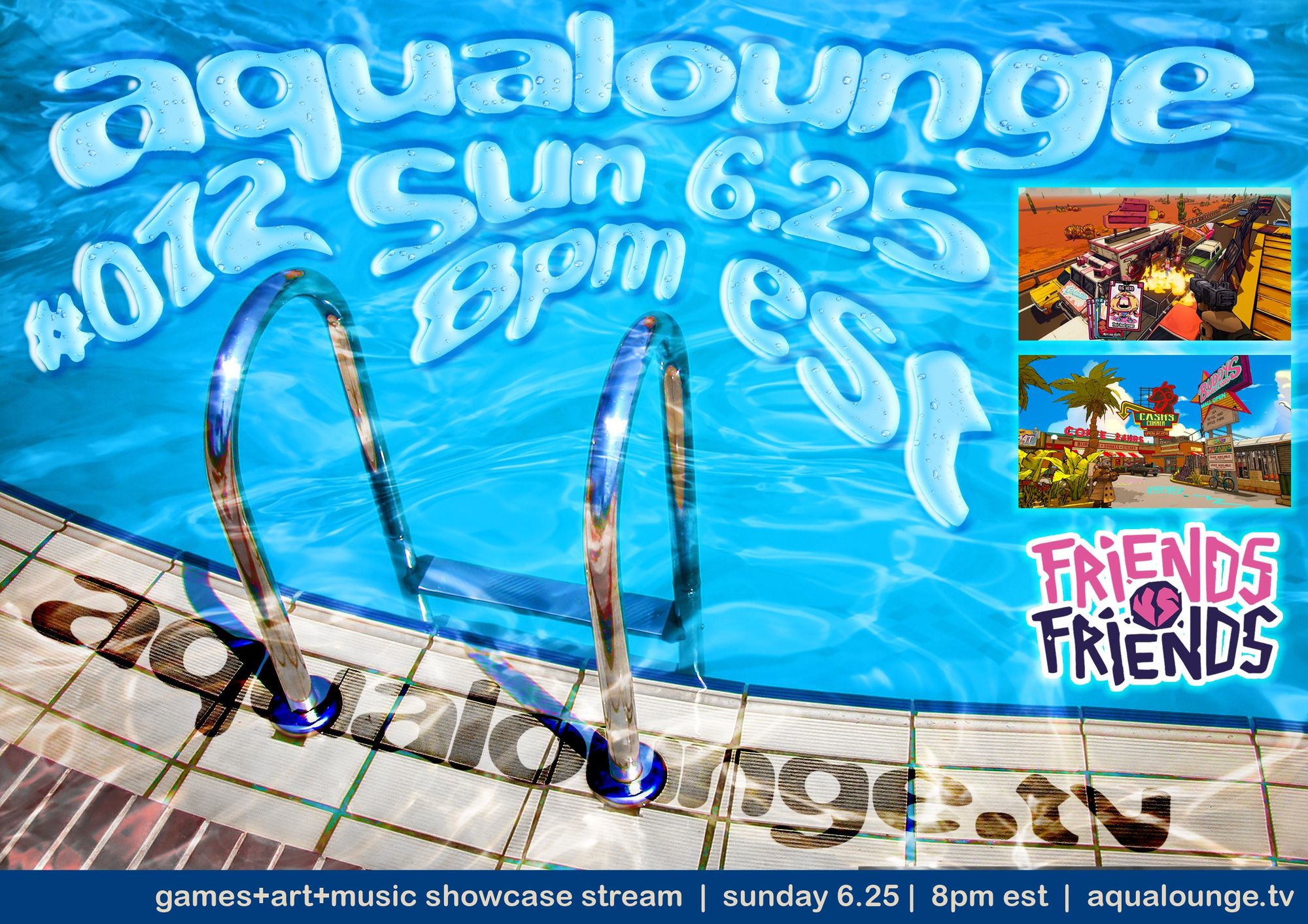
SUPERJUMP: That sounds like a lot of work.
Krieger: It is a lot of work.
SUPERJUMP: This is a bit of a subject change – I guess you sort of pointed to this earlier when you were talking about the vibe – but how do you decide what games to feature on Aqualounge? And are you drawn to different games for the channel than when you’re just playing on your own time?
Krieger: Yeah, absolutely. Part of the reason why I’ve been continuing to stream with Aqualounge is because it really encourages me to get out there, to see what’s happening in the deepest grassroots of indie games. I really have to go hunting for a lot of what I feature. What I try to do is a 50/50 mix of retro deep-cut stuff and a blend of indie stuff that, generally, is self-published [by] solo developers or small teams. I ran my first Japanese indie last stream, and I’m going to try to continue to feature more stuff from Japan. I feel like we love Japanese games, we love indie games, but Japanese indies don’t generally get a lot of American press. That’s something I want to try to work towards changing.
With my Showcase [segment], I always try to pick an indie game that I think has an interesting relevance to a topic in the game industry today that I want to talk about. Oftentimes that ends up being a game that, similarly, is self-published or off the beaten path.
"It really encourages me to get out there, to see what's happening in the deepest grassroots of indie games."
But I’ve [also] run games that have been published under kind of major labels. I ran Friends vs Friends last time, which is published by Raw Fury, a pretty big publisher. But it is an anomaly in that it’s a multiplayer-only indie shooter that is thriving right now, in a landscape where everything is dominated by games-as-service shooters. It really stuck out to me as something a little bit unusual, so I decided to take a look into it. There was also Infinite Guitars. That was published by Humble, and it had a Game Pass deal. It had everything that an indie game could want, and... nobody played it. I wanted to look at why.
Generally, I try to make it part of my mission statement to bring work to the forefront that people aren’t getting through the same three channels that they get all their indie game curation from. But once in a while, I’ll bend that if I think it’s an interesting enough individual case.
SUPERJUMP: What’s the best – quote-unquote “best” – or most memorable game that you’ve discovered through the channel?
Krieger: This year, I would probably say my fave, which I think needs more eyes on it, is a game called 24 Killers that I ran back in March.
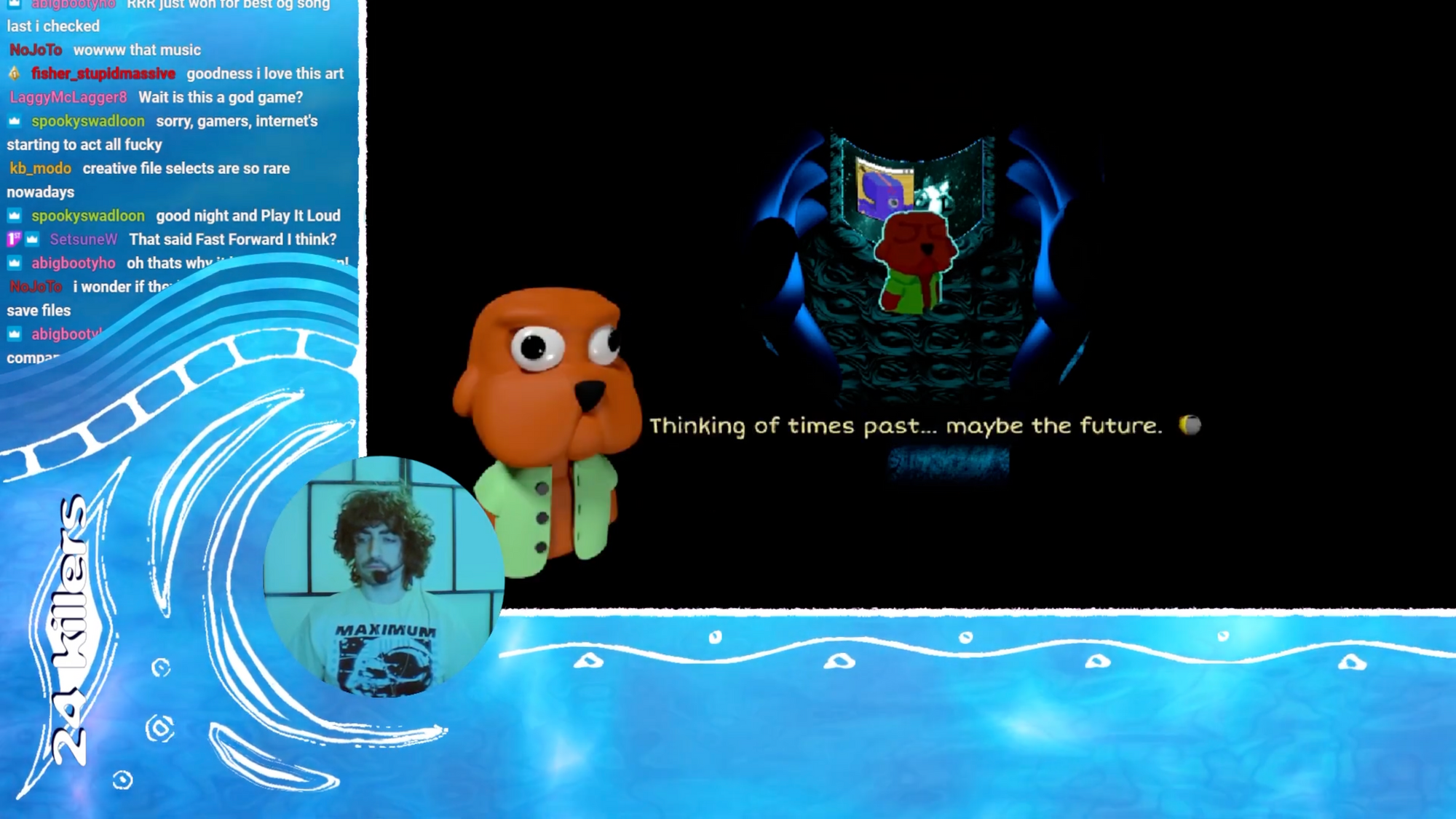
It’s a game heavily inspired by the famous Moon Remix RPG Adventure, which is a real genesis point for a lot of really important developers. It’s one of those games that is simultaneously a tribute to something important but also holds its own identity, particularly through the writing and the cadence of the gameplay. I thought 24 Killers was really amazing – on the whole, it’s probably my favorite that I’ve played as far as the indie showcases go.
SUPERJUMP: Yeah, I think I discovered that game either through Aqualounge or through another creator who I follow named Maraganger-…
Krieger: Oh yeah, Mara and I are buds.
SUPERJUMP: Yeah! I know they put out a video on it, and I saw that you streamed it as well, and I was like, what is this game? This looks really cool.
What has been the hardest part of running Aqualounge?
Krieger: The lift! The lift, in a multitude of ways. Somebody much wiser than me once said that when they were learning how to make a video game, nobody taught them that they had to make the whole thing. And that’s true of stuff like Aqualounge.
Every time I promo anything, I have to cut a single video six ways from Sunday. I have to cut it for the full VOD, I have to cut it for the individual VOD, I have to cut it for Twitter clips. If I end up doing TikTok, I'll have to cut it for that too, and I’ll have to change the aspect ratio. So I have to do all that.
Another big one is curating, getting enough stuff for each stream. There are indie game curators that are pretty popular, but they all tend to run stuff that comes from the same sources, stuff that comes from some of the big publishers. And then when you get into no-man's land, the tools that are available to you to actually parse the sheer number of games that come out on, say, Itch every day... a couple of times, I’ve just had to trawl the new releases on Itch. Once you’re there, you’re on the cutting edge. You have to do a lot of investigation yourself.
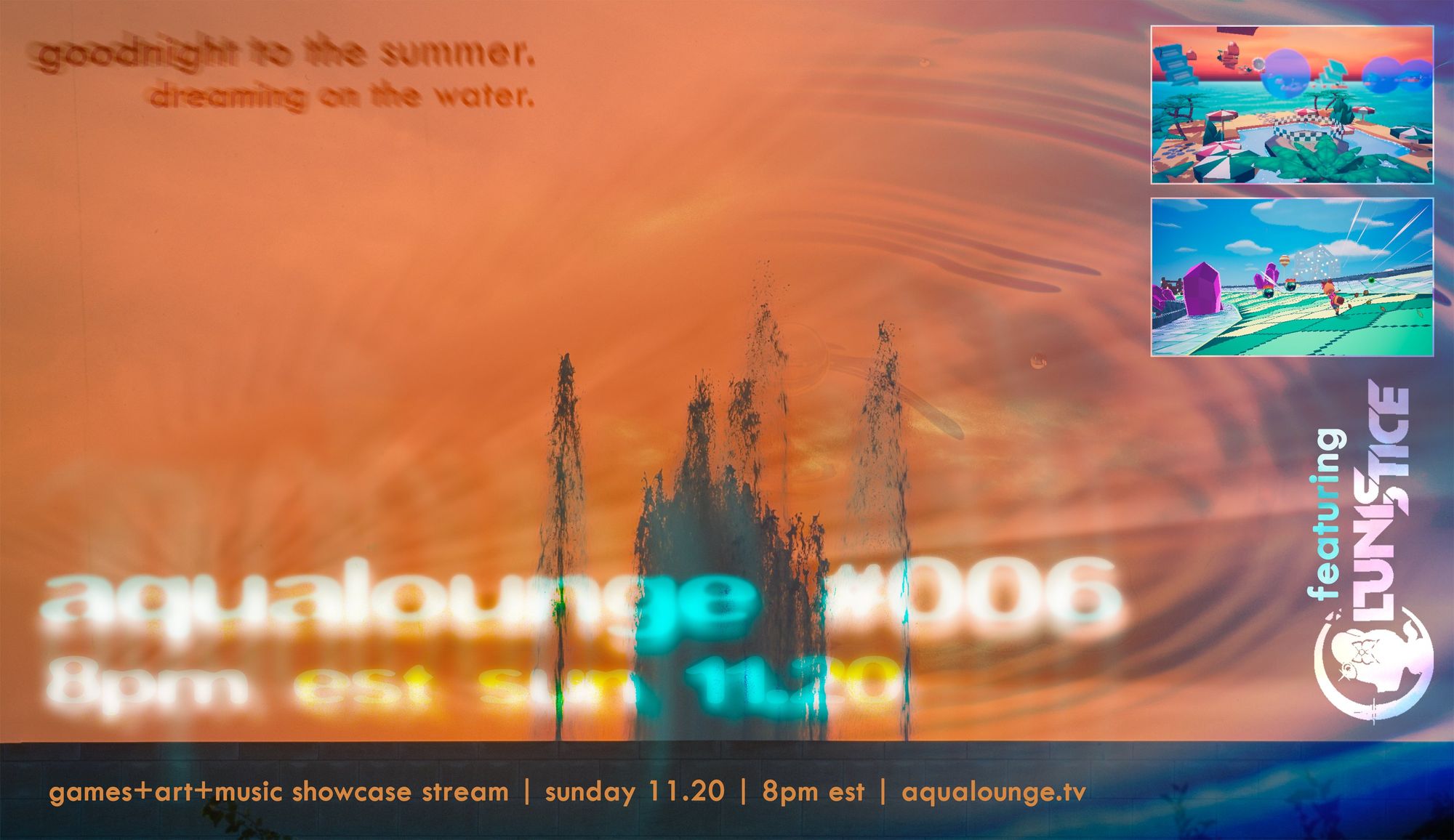
I’m really grateful for a couple of curators who I’m going to shout out right now – Dominic Tarason, who writes for PCGamer; Andrew from Indiepocalypse, absolute saint; Indie Hell Zone is another good one – they put a lot of stuff in front of me because I keep up with their output. That helps a lot. But then there are just gaps that I have to go down rabbit holes for hours to try to fill.
I think for the whole effort to continue, I’m going to need some help. I’m working on figuring out a plan for that, and there are people who have expressed interest, so hopefully it’s not something I have to carry on my back for too much longer.
SUPERJUMP: Yeah. I know just for myself, finding out about new games to engage with just as a player, without even thinking about what it is I have to produce, that’s hard.
Krieger: I have a little ramble about that actually, if that’s okay.
SUPERJUMP: Go for it!
Krieger: Especially coming off of Summer Games Fest last month – June is just a circus of pressers now – we’re at a real event horizon for how we get our information about video games. There are so many of them coming out all the time, and the infrastructure that we depend on to have them put into our field of vision is not sufficient. The form it needs to take has to fundamentally change in a way that I don’t think has been discovered. That saying, "The old world is dead, the new world is struggling to be born, now is the time of monsters." [laughs]
So we’re at a real transformation point and we’re in the ugly dark pits of it. For instance, Too Kyo Games is the studio that was cofounded by talent behind Zero Escape and Danganronpa. Their newest game, Master Detective Archives: Rain Code, just came out. And that’s published by Spike Chunsoft and everything. And nobody bought it! And Spike Chunsoft couldn’t print enough copies! There are major games with multimillion-dollar budgets that are just, like, nosediving right into the pavement. The amount of oxygen in the room is being totally sucked out, and stuff like Game Pass is really just the tip of the iceberg, I think.
"My hope with Aqualounge is [to] make a scene with a compelling core statement that resonates with people, and maintain all of the different parts of it as kind of a space, in person or virtually, for people to linger and to socialize. That’s part of my vision of what we’re going to have to do."
And as you’re keenly aware, games writers have been absolutely taking it on the chin this year. There have been so many bloodbath layoffs, there’s one every other week. Something’s going to have to give. My hope with Aqualounge is [to] make a scene with a compelling core statement that resonates with people, and maintain all of the different parts of it as kind of a space, in person or virtually, for people to linger and to socialize. That’s part of my vision of what we’re going to have to do.
I think one of the first "labels" to really get this in the indie space is Haunted PS1. I tend not to run their stuff, not because I don’t like them, but because they get a lot of press and I try to save my airtime for people who are more on their own. But they have it figured out. I think that’s going to be the blueprint going forward for a lot of smaller teams. It’s time to circle up. And that’s what I’m trying to do with Aqualounge.
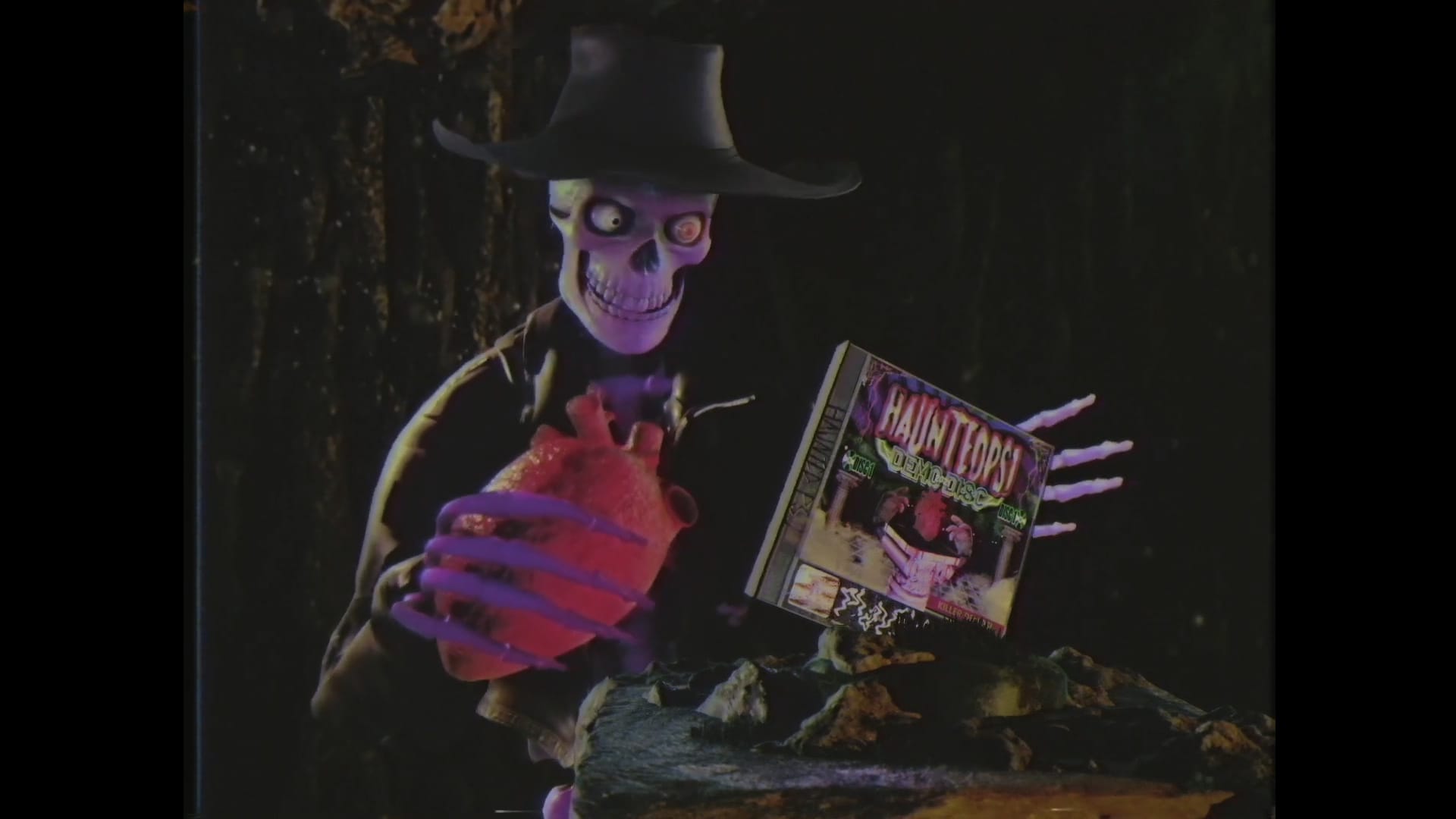
SUPERJUMP: That’s really cool. And the Haunted PS1 connection I hadn’t made, but that’s totally what they do – uniting people underneath an aesthetic idea but still allowing wiggle room and interpretation.
Krieger: Exactly. What I’m trying to do, out of everybody out there, I think they’re the closest.
SUPERJUMP: This leads to one of my other questions. Earlier you talked a little bit about what you saw for the future of Aqualounge, and I was wondering: what do you see for the future of Aqualounge?
Krieger: Oh, I see lots of the stuff. The initial first draft of Aqualounge, back 7 or 8 years ago, was called Lighthouse, and the idea was that it was going to be a 24-hour combination of automated and live content. I don’t know if anybody’s seriously tried to do that with Twitch before. I know Twitch forcibly ends your stream after 48 hours of solid playtime, so I’d have to come up with some way to kick-start that back again when everyone’s asleep. But I’ve thought about doing that.
More documentary content is certainly in the cards, [like] the couple of Deep Dive videos I’ve done – telling the story around games as a human story, from creation to consumption, as a special-interest topic rather than as a hype-machine sort of thing. I see that as a critical pillar of Aqualounge, to try to humanize the entire ecosystem more, and make everybody realize that it’s one thing. It’s not disparate parts, it’s all one beating heart that circulates blood throughout.
"I see that as a critical pillar of Aqualounge, to try to humanize the entire ecosystem more."
I want to get more involved in the music aspect. I’d love to work out virtual concerts and virtual live sets to be played on stream. More merch would be fun. I even have a crazy idea that I’ve been kicking around called the Aqualounge Road Show, where I buy a portable projector and I do guerilla Aqualounge pop-ups at video game events. I want to bridge the physical world of how people live their lives and this sort of lifestyle image as much as possible, and if that involves going out into the world myself in a physical place, so be it.
There are a bunch of different directions that I’m interested in pursuing. But right now, how feasible is all of it? Don’t really know, figuring that out.
SUPERJUMP: That all sounds really really cool. I love the Deep Dives, and I loved the one you did on Automaton Lung, and more of that stuff would be amazing. And the idea of a roadshow is so cool.
SUPERJUMP: I just have one or two more questions. Sort of a shift away from talking specifically about the channel, but I was curious if you see Aqualounge as separate from your game dev work, or if it’s related, or feeds back into it in any way?
Krieger: I think it’s related! I don’t want to say too much, but I am not opposed to integrating the two. I have some thoughts about that, that I’m going to keep a secret for now.
SUPERJUMP: I’m guessing this last question might be on a similar wavelength, but are you working on anything besides Aqualounge these days that you’re at liberty to share?
Krieger: Yes. Early concept mockups for a smaller game that will precede a bigger game. The smaller game is going to be mostly narrative, and something to get back into writing, which is something that I haven’t done in awhile – as well as a ground for me to play with what I’ve learned graphically.
I’ve been working as a developer at Shell Games in Pittsburgh ever since Crossniq+. You may have seen my work in Among Us VR, for instance. [laughs] And in that time, I’ve been getting some mentorship, particularly [in] 3D graphics. I want to flex that with the next game I’m going to be working on. It’s going to be small. It might be free – if it’s paid, it will be for very little.
And I have plans after that, that I’m not at liberty to talk about. But I can tell you that much.
SUPERJUMP: Cool! Well, is there anything else you that want to add before I let you go?
Krieger: Just a big thank you for talking to me about this. It makes me really happy to talk about the high concept behind Aqualounge. I think it’s something that’s really hard to communicate, and I’m still figuring out how to communicate. I try my best to communicate it by just keeping it up and making it a presence in people’s eyes, so thank you for taking the time.